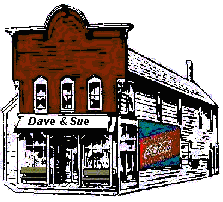|
Tobacco Explained |
|
|
|
Tobacco
(To-bac-co): Tobacco is a tall, herbaceous plant the leaves of which are harvested, cured, and rolled into cigars, shredded for use in cigarettes and pipes, and processed for chewing or snuff. Tobacco is an important crop in almost all tropical countries as well as in many temperate ones. The main source of commercial tobacco is Nicotiana tabacum, although Nicotiana rustica is also grown and is used in oriental tobaccos. Growers have developed a wide range of morphologically different types, from the small-leaved aromatic tobaccos to the large, broad-leaved cigar tobaccos. The most practical means of classifying them is by the method used for curing or drying the leaf. HISTORY Tobacco is native to the Americas, and the practice of inhaling the smoke of the dried plant material has been documented in the Mayan culture more than 2,000 years ago. The Mayans moved northward from Central America through the Aztec Empire and eventually took their customs to North American Indian tribes. The Arawak Indians of the Caribbean smoked tobacco; Christopher Columbus, during his 1492 voyage, found them smoking loosely rolled cigars. The Spanish took tobacco seeds to Europe, where Jean Nicot gave the plant its generic name, Nicotiana. Sir Walter Raleigh began the popularization of pipe smoking in Great Britain in 1586, and the cultivation and consumption of tobacco spread with each voyage of discovery from Europe. Two kinds of tobacco were traded between Europe and America: Spanish, from the West Indies and South America, and Virginia, from what is now the state of Virginia. The Spaniards were the first Europeans to cultivate substantial amounts of tobacco. Despite its popularity in England, James I--who vehemently disapproved of tobacco--forbade its production there. Europeans at first smoked their tobacco in pipes, and later in cigars. Cigarettes spread in popularity only after the Crimean War (1854-56); their spread was aided by the development in the United States of the first cigarette-making machine in 1881. Source: Grolier Encyclopedia (c) 1997 Dave & Sue's Antique Country Store Collection www.AntiqueCountryStore.Com |
